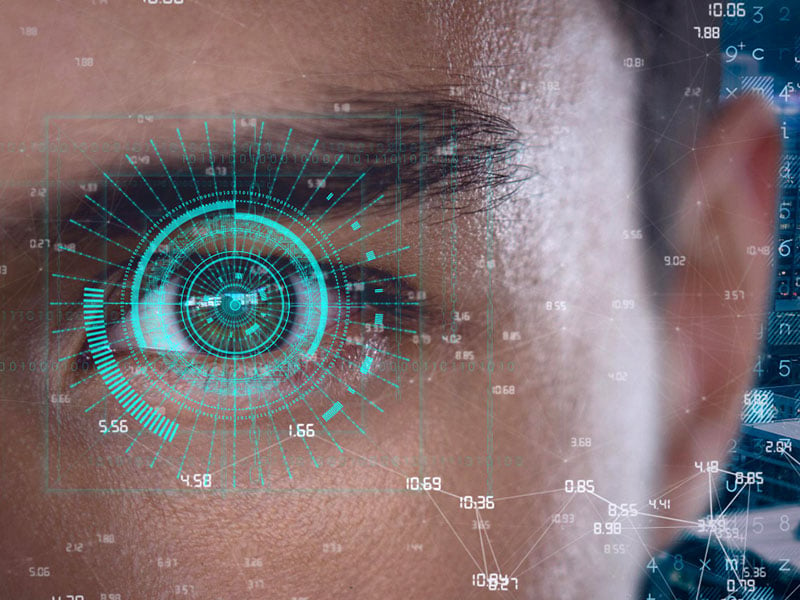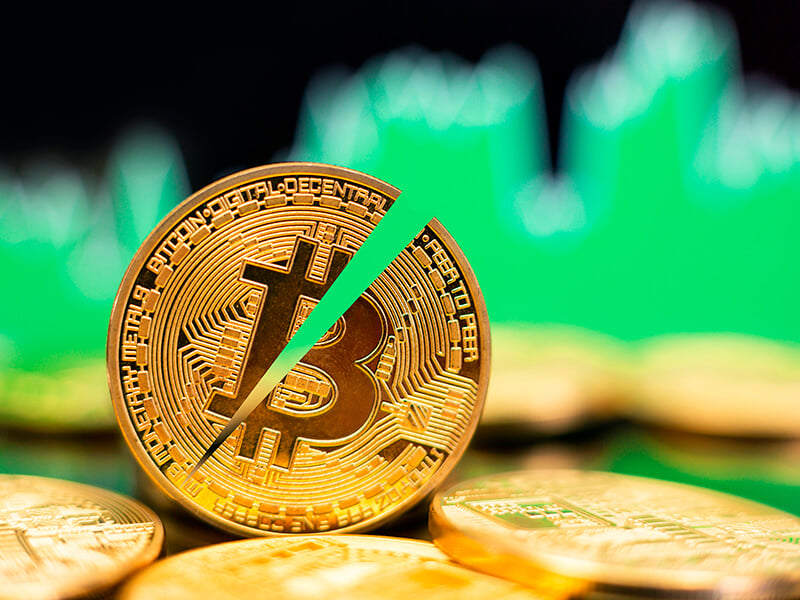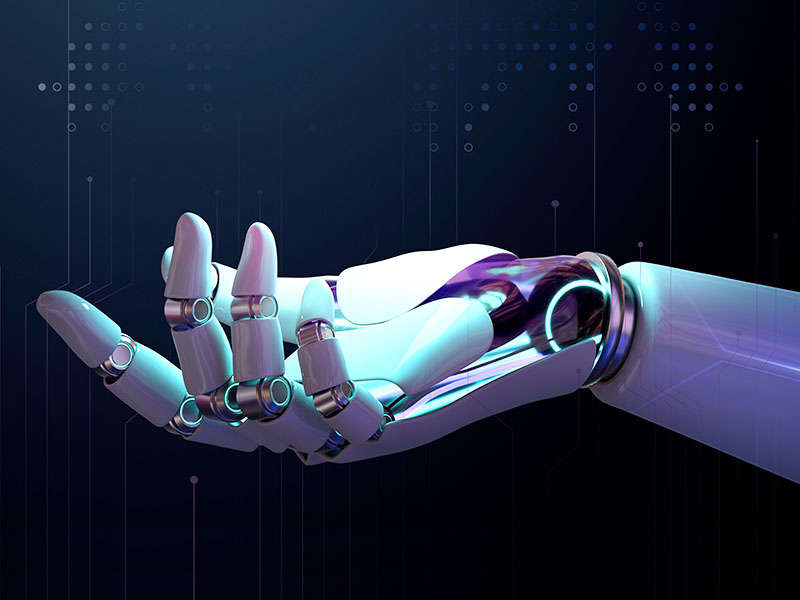What is Worldcoin and what does scanning the iris involve?
04/03/2024Worldcoin was introduced in summer of 2023 as a revolutionary project with the mission of creating a 100% secure digital identity, essentially a kind of fortified "digital passport," based on the verification of a unique and non-transferable element inherent to each human being—the iris. According to its developers, World ID will help distinguish human online activity from that generated by machines. In the first phase of the project, the creation of this secure digital identity is planned for 2 billion humans. To make this possible, Worldcoin has called on the global population to scan their iris. In return, Worldcoin compensates participants with a few tokens of its successful cryptocurrency, WLD, which has quadrupled in value within a few weeks of its initial launch. The payment in WLD tokens is not coincidental; it is part of Worldcoin's strategy, aiming to leverage the new digital passports to create a comprehensive ecosystem that provides universal and equitable access to advanced financial services for the entire global population. To achieve this, they encourage "iris sellers" to use the Worldcoin cryptocurrency on its fee-free blockchain, unlike Bitcoin, Ethereum, or other cryptocurrencies that do charge transaction fees. How does Worldcoin work? Worldcoin aims to address the issues of bots, rapid creation of fake identities, and content with artificial intelligence. It is designed, according to its developers, to provide every individual in the world with a unique digital identification. Additionally, Worldcoin promises to ensure the financial inclusion of each person in a fair and equitable ecosystem through a universal basic income. Users receive this income in exchange for allowing their iris to be scanned. To create the secure digital passport with Worldcoin, users must undergo an iris scan, which serves as proof of humanity and a unique identity on the blockchain. This process ensures that the individual on the other side of that identity is a human and not a fake profile created with artificial intelligence. In pursuit of the success of their proposal, the company offers users a small amount of their own Worldcoin tokens in exchange for iris scanning. The initial incentive of receiving free cryptocurrency, in the form of a universal basic income, is emphasized by Worldcoin advocates as the basis for the inclusive and universal nature of their initiative. This approach allows anyone to scan their iris, and the WLD tokens received in return can assist people without access to traditional financial services in starting to save and invest. How to Scan the Iris with Worldcoin? The registration process with Worldcoin involves scanning the iris with an orb, the central hardware device of Worldcoin developed by Tools for Humanity. The orb is spherical and processes all the information. Currently, Worldcoin has installed orbs in different countries, including Spain, where users can scan their iris in exchange for Worldcoins. To do this, it is necessary to download the Worldcoin mobile application, World ID, generate a QR code with it, and display it in front of the orb. The orb, upon recognizing it, will scan the user's iris, while a Worldcoin collaborator remotely oversees the operation. The orb takes less than a minute to perform the scan and validate the subject's identity. In exchange for their iris, the user receives a unique number called "IrisHash" and a cryptographic wallet with Worldcoins. "This digital passport is accepted as proof of unique humanity, which people can use in the digital world without the need to share any other data," assure its developers. What happens with my scanned iris in exchange for Worldcoins? Once the iris scan is completed, and digital identity is granted to the user, Worldcoin assures that the orb quickly eliminates the images unless the user requests their preservation. Only the set of numbers called "IrisHash" is stored for identification, without any additional biometric data. Worldcoin also commits to ensuring that users share only the necessary information they wish to share, providing verification options through linked devices or the additional facial authentication orb for high-security cases. Despite these commitments, the collection of biometric data through iris scanning for the unique proof of humanity continues to raise significant questions regarding privacy and information security. Some countries such as Brazil, France, India, or Kenya have halted Worldcoin's iris scanning. How much do you get paid for scanning your iris? Worldcoin pays 25 WLD for scanning your iris, which, according to the cryptocurrency's exchange rate in February 2024, has translated to an average of between 50 and almost €160 for iris sellers, depending on the value of Worldcoin on the day they scanned their iris. At the beginning of February, the value of each WLD unit was around two euros, and by the end of the month, it had risen to nearly seven euros. What can I spend my WLD on? 'Iris sellers' have the freedom to use their Worldcoins from the moment they receive them. They can exchange the payment for other cryptocurrencies, withdraw them in euros from a specialized ATM, or hold onto the tokens in the hope of an increase in their value. Additionally, WLD payments are already accepted on platforms such as Discord, Shopify, Minecraft, Telegram, Mercado Libre, or Reddit, among other places. Who is behind Worldcoin? Worldcoin bears the stamp of two innovative minds: Sam Altman and Alex Blania. Altman is the CEO of OpenAI and a key figure in artificial intelligence development, leading projects like ChatGPT. Blania, on the other hand, is the co-founder of Tools For Humanity, contributing his experience in creating technological tools for a more equitable economic system to this new and successful cryptocurrency.
[ ... ]What is Bitcoin Halving and how does it affect the cryptocurrency?
25/02/2024The term "Halving" in the context of Bitcoin refers to a scheduled event in the cryptocurrency protocol, in which the reward for mining blocks is reduced by half. This event occurs approximately every four years and has a significant impact on the supply and demand of Bitcoin. During Halving, the number of new Bitcoins created per block is halved. This implies a decrease in the issuance rate of the cryptocurrency, which in turn can have an effect on the price and volatility of Bitcoin. Many analysts and experts are speculating about the long-term implications of the Halving and its influence on the cryptocurrency markets. Services related to Bitcoin Halving There are various types of services and tools related to Bitcoin Halving that can be beneficial for different actors in the cryptocurrency ecosystem. These services include: 1. Halving analysis and forecast This type of service provides detailed information about the past, present and future of the Bitcoin Halving. Through analysis and forecasting, it helps investors and cryptocurrency enthusiasts make informed decisions on how to position themselves before and after the event. 2. Bitcoin Mining As the reward in Bitcoin decreases, mining this cryptocurrency becomes more challenging. Bitcoin mining services offer solutions and advice to maximize mining efficiency and profitability, even in a low reward environment. 3. Financial advice related to Halving As the issuance rate of Bitcoin slows, investors may need to adapt their investment strategies. Financial advisory services specialized in cryptocurrencies and Bitcoin provide personalized recommendations and analysis to optimize investment performance in this context. 4. Development of tools for cryptocurrencies The Bitcoin Halving may generate changes in the cryptocurrency ecosystem, which may require the creation of new tools and solutions. Companies specialized in software development and applications related to cryptocurrencies can provide development and consulting services to adapt to these new demands. Bitcoin: Reward Reduction and Its Implications on the Cryptocurrency Ecosystem Bitcoin, the most famous and valuable cryptocurrency in the world, has periodically experienced an event known as a "reward reduction" or "Halving", which has significant implications on the cryptocurrency ecosystem. In this article, we will explore in depth what Bitcoin reward reduction is and how it affects both miners and investors. What is Bitcoin reward reduction? Bitcoin reward reduction is a scheduled event integrated into the cryptocurrency protocol. It occurs approximately every four years and consists of a halving of the reward miners receive for validating transactions and adding new blocks to the Bitcoin blockchain. Originally, when Bitcoin was launched in 2009, miners received a reward of 50 Bitcoins for each block mined. However, due to the reward reduction process, this amount has decreased over time. In 2012, it was reduced to 25 Bitcoins per block, in 2016 to 12.5 Bitcoins per block, and in 2020 it was reduced again to 6.25 Bitcoins per block. Implications for Bitcoin miners Bitcoin's reward reduction has a significant impact on mining the cryptocurrency. With each reduction, miners receive fewer Bitcoins for their work, which means less direct monetary reward. This may result in some miners leaving the Bitcoin network, especially those with higher electricity and mining equipment costs. On the other hand, those miners who manage to adapt and remain profitable even with a lower reward are rewarded with a larger share of the Bitcoin supply generated through mining. This concentration of Bitcoins in the hands of fewer miners can have effects on the decentralization and security of the network, since the number of active participants in the transaction validation process is reduced. Implications for investors and the price of Bitcoin Bitcoin's reward reduction also has implications for the price and supply of the cryptocurrency. As the issuance of new Bitcoins decreases, the supply in the market reduces. This may lead to higher relative demand if Bitcoin demand continues to grow or remains stable. In previous reward reduction events, a long-term increase in Bitcoin price has been observed. This is because the decrease in the supply of new Bitcoins can lead to greater perceived scarcity and therefore an increase in their value. However, it is important to note that the price of Bitcoin is highly volatile and can be influenced by a variety of external factors, so a continued increase after reward reduction cannot be guaranteed. Bitcoin's reward reduction is a key event in the life of the cryptocurrency and has implications for both miners and investors. As the number of new Bitcoins generated is halved, miners must adapt to remain profitable and the supply of Bitcoin on the market may decrease. However, this event can also have a positive impact on the price of Bitcoin in the long term. It is important to understand and take these factors into account when evaluating investment potential in Bitcoin and the cryptocurrency market in general. Bitcoin and limited supply: a unique combination Bitcoin has captured the attention of the financial world like no other cryptocurrency. One of its most notable features is its limited supply, meaning that only a finite number of bitcoins will be created in the world. This contrasts with traditional fiat currencies, which can be printed at the discretion of governments. How does Bitcoin limited supply work? Bitcoin was designed to have a total supply of 21 million coins. As new blocks are mined by users and added to the Bitcoin blockchain, new coins are generated and distributed as rewards to miners. However, this reward is halved in an event known as "Halving", which occurs approximately every four years. Halving ensures that the rate of issuance of new bitcoins decreases over time, following a predictable mathematical function. Currently, the reward per mined block is 6.25 bitcoins, but this number is expected to reduce further in the future. This controlled scarcity mechanism is a central part of Bitcoin's monetary policy. Advantages of Bitcoin Limited Supply Bitcoin's limited supply has several significant advantages: Sense of scarcity: The limitation in the supply of Bitcoin makes it a scarce and valuable asset. As it approaches its maximum supply, demand and price are expected to increase. Inflation Protection: Unlike fiat currencies, Bitcoin cannot be inflated or devalued at the discretion of governments. Its limited supply protects it from inflation and makes it a safe store of value. Monetary stability: With carefully controlled supply, Bitcoin offers greater monetary stability compared to national currencies, which can be affected by political and economic decisions. Challenges and debates surrounding the limited supply of Bitcoin Despite the advantages, Bitcoin's limited supply has also generated debates and challenges. Some argue that the scarcity of bitcoins could hinder its mass adoption as an everyday currency. Price volatility is also an issue of concern. Furthermore, the fact that only about 80% of all existing bitcoins have been mined raises questions about how the latest bitcoins will be distributed and how this will affect the network and its sustainability in the future. Bitcoin has revolutionized the financial world with its limited supply and unique monetary policy. Controlled and predictable scarcity is an essential part of its design, providing a solid alternative to traditional fiat currencies. Although limited supply can pose challenges and debates, it also offers significant benefits, such as a sense of scarcity, protection against inflation, and monetary stability. As Bitcoin continues to mature and its supply approaches its maximum limit, its value and relevance in the financial world continues to grow, leaving investors and enthusiasts with great anticipation about its future.
[ ... ]Google will expand telepresence testing to other companies outside of its offices
21/10/2022Google continues with Starline 3D communication's project, based on telepresence and has announced that they will start testing it soon. This new communication solution works as a window in which you can make eye contact with another person, who appears in 3D and real size , allowing two participants to feel as if they were together, in the same space, despite the distance. To achieve this, Starline works with two structures in parallel, the first formed by a screen with cameras, speakers, lighting microphones and the computer where, they have explained, the other person is represented. The secod structure has a rear unit with infrared feedback, where the user is located. So far, Starlie prototypes have been tested in some Google offices in the United States and now, it has been announced that they will also begin testing in other technology partner companies such T-Mobile, Hackensack Meridian Health or Salesforce.
[ ... ]Nvidia introduces the fastest 3D rendering tool on the market
01/04/2022Nvidia has taken a giant leap in the realm of rendering with his new desenvolupment, Instant NeRF, a tool that converts 2D photos into a rendered 3D scene in seconds. “The model requires only a few seconds to train on a few dozen still photos, with some data about the angles rom were the camara had taken them, and can then render the resulting 3D scene in tens of milliseconds speeding up the process by 1000x" , Nvidia has explein. The development, is the result of more than two years of work, and has used a technology based on neural radiation fields, NeRF. This technology can filling in the blanks and reconstructing any scene by predicting the color of light radiation in any direction. Some uses proposed by Nvidia for his Instant NeRF are create avatars and scenes in virtual worlds. It is also suitable, they explain, to capture the participants of a videoconference and their 3D environments or to reconstruct scenes for 3D digital maps.
[ ... ]





